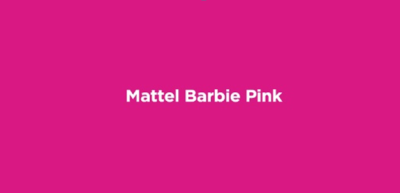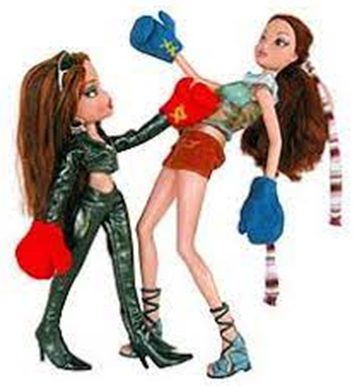
[Image Sources : Business Insider dot in]
Lilli doll was an embodiment of a lewd cartoon character created by Reinhard Beuthien for a tabloid German newspaper, Bild-Leitung. It was later given a physical form by a West German company called Greiner & Hausser Gmbh. Back then the dolls were not for kids due to their lewd connotations. After Barbie’s public presentation at the American International Toy Fair in New York City in 1959, Greiner & Hausser Gmbh filed a lawsuit in 1961 arguing that the design of Barbie infringed their hip-joint patent of Lilli and accused Mattel of creating a false impression that they were the originators of the format, and, misleading the public.
However, this dispute did not stop Mattel from gaining control over Barbie which cost them a settlement of $21,600 which roughly adds another zero in today’s dollars. In comparison to today’s success story of Barbie, it does seem to be a bad bargain.
Through this settlement, Barbie took over the rights of patent and copyright and barred Greiner & Hausser Gmbh from further producing Lilli dolls.This is regarded as the first step in the ‘Barbie World’ which was achieved through legal interventions. Ahead in the course, Mattel protected Barbie and its image dearly and has fought several lawsuits whenever someone has tried to bring back lewd connotations or has tried to establish unauthorised associations.
INTELLECTUAL PROPERTIES PROTECTED BY MATTEL:
Trademark- on the word Barbie in different fonts.
The trade dress of Barbie which is the colour pink, (to be more specific it is a combination of Magenta and Pink –Pantone 219C) is the only IP not registered by Mattel or hasn’t been legally possible by them, yet.
Copyright over the artistic work which is the doll itself and its reputation and public image. Mattel has actively taken part in protecting the image of Barbie and has raised allegations against whoever tried to connote otherwise.
Patent and Design rights keep getting exhausted and they enter the public domain. However recently enough, in December 2021 Barbie obtained design protection for its head design.
By protecting all these features of Barbie, Mattel earns tons from licensing certain rights to merchandise or use its products. Earning from licensing can commonly be of two types- either through royalty payments or lump-sum fees and recently due to the advent of the Barbie movie we can witness several strategic partnerships with hundreds of brands entered by Mattel with several well-known brands suchas NYX, OPI, and the new creation of Burger King with pink sauce.
OVER-PROTECTIVE MATTEL:
Every inch of Barbie has been protected starting from its construction to its most associated colour, pink. To dissociate Barbie from others Mattel has taken every possible step.
Mattel sued a Utah artist Thomas Forsythe[1] over a series of 78 photos portraying naked Barbie dolls that he called “Food Chain Barbie.” The images included naked Barbies in blenders, Barbies wrapped in tortillas and covered with enchilada sauce, and skewered Barbie heads in a fondue pot.
The 9th U.S. Circuit Court of Appeals in San Francisco ruled that Thomas Forsythe’s use of Mattel’s copyrighted work in his “Food Chain Barbie” series was fair use and consumers would not be confused that Mattel had sponsored his art.
This suit was decided against Mattel and they were asked to pay $1.8M as legal fees to Thomas Forsythe.
Barbie has its name protected under trademarks in different fonts in accordance with its evolution in time. There have been several lawsuits to protect this name. One of the most famous cases is,Mattel Inc. vs MCA Records Inc.[1] which released the ‘Barbie Girl’ song. This song was by a Danish/Norwegian pop group named Aqua, whom Mattel alleged of defaming their brand and accused them of violating copyright and threatening the Barbie brand by portraying her as a sex object. This case was dragged to the US Supreme Court until it got rejected under fair use as a creation of parody. Later in 2017, Mattel filed a suit against a film called Tera Intezaar in India where Justice Endl aw refused the ex-parte injunction claimed by them for using the word ‘Barbie’ in their song without their authorisation or permission. Mattel alleged the defendants to have used the song featuring Sunny Leone in an inappropriate and provocative manner leading to tarnishing and degrading the distinctive quality of Barbie to which Justice End law quoted a line from the above mentioned US case where the judges said, “The parties are advised to chill.”
In August 2022, Mattel filed a complaint against a snack company called Rap Snacks in regard to the Barbie-Que Honey Truffle Potato Chips. Mattel argued over the use of similar colour and trademark which was eventually settled after a month.
As recent as two months ago, in June 2023, Mattel objected to Burberry trying to get BR BY trademarked. They argued that such usage would cause confusion in the minds of the people and create an assumption of association between the two independent brands. They further elaborated on the reach of Barbie not being limited to dolls but also encompassing jewellery, cosmetics, clothing, etc. which would birth confusion in the minds of the people. This case is ongoing and has not been decided as of yet.
TIME REPEATING ITSELF- BARBIE VS. BRATZ[1]
Carter Bryant while working with Mattel to create dresses for Barbie in the 2000s created Bratz- this claim was however turned by his legal defense into him getting such an idea while on a seven-month break from working at Mattel. Carter sold his idea to a Mattel competitor, MGA Entertainments who brought Bratz Girls- Jade, Cloe, Yasmin, and Sasha, the first competitor of Barbie in 2001.
[2]Mattel sued both the ex-employee and MGA and alleged that Carter had secretly developed the concept of Bratz while working with Mattel and secretly sold the idea to MGA to which MGA denied and countersued Mattel for corporate espionage, using spies with fake business cards and dummy invoices to gain access to MGA’s ideas and accused Mattel of threatening to scupper business deals with retailers and media firms if they did business with Bratz.
This suit ended with an astonishing defeat for Mattel in 2013, after 9 years of copyright and trade secret battle between the two, and was decided against Mattel and was ordered to pay MGA’s legal fees of $138M.
This marked the end of Mattel’s long-standing monopoly over dolls.
CONCLUSION:
Mattel continues to remain upfront about their rights but this article reflects how over-protectiveness towards intellectual property can cost you a fortune. Mattel has time and again objected against all those who have used their brand name, ‘Barbie’, but we can witness through the trail of precedents that it did not end up favouring them. Therefore, unnecessary over-exaggeration to establish your rights is never recommended as it can in-turn be your pitfall.
Author: Soumi Lahiri, A Student at University of Petroleum and Energy Studies, in case of any queries please contact/write back to us via email to chhavi@khuranaandkhurana.com or at Khurana & Khurana, Advocates and IP Attorney.
[1] Mattel Inc. v. Walking Mountain Productions353 F.3d 792 (9th Cir. 2003).
[2] Mattel v. MCA Records, 296 F.3d 894 (9th Cir. 2002).
[3] Mattel, Inc. v. MGA Entertainment, Inc. 616 F.3d 904 (9th Cir. 2010)





